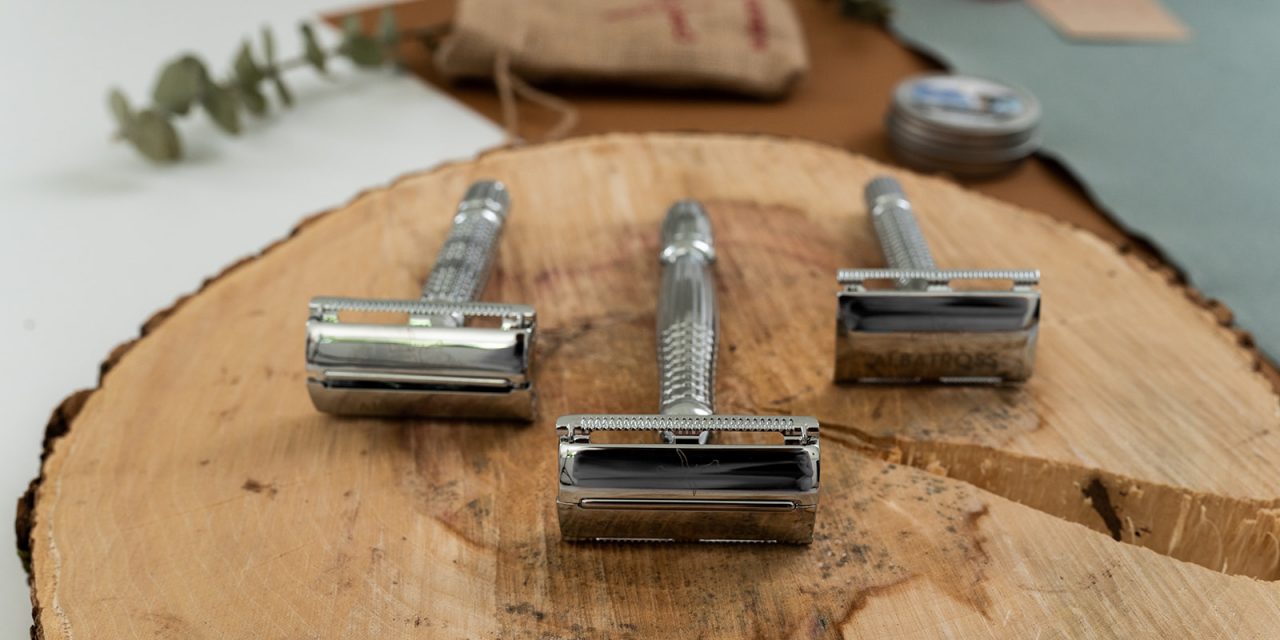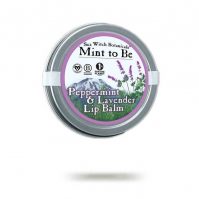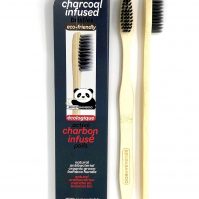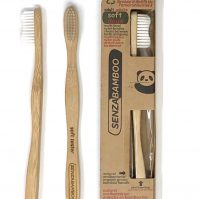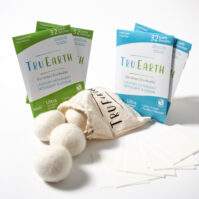A while back, a friend asked me to investigate Earth-friendly shaving options. She was feeling guilty about using and throwing away plastic razors and couldn’t find a viable non-disposable option in stores.
The Problem with Disposable Razors
It turns out her guilt is well-founded. Disposable razors are incredibly wasteful and reusable options are vastly underrepresented in many stores. Just picture the shaving aisle at your grocery or drug store. In 1990, the Environmental Protection Agency estimated that 2 billion throwaway razors were produced in the United States each year. A 2019 figure from Statista says around 159 million Americans still use disposable razors, a figure that is projected to increase.
As the name suggests, disposable razors are used a few times and subsequently tossed away. Few recycling centers will take these products because their small, sharp parts require more time and safety risk than they are willing to undertake. As a result, many disposable razors end up in a landfill or part of an ocean garbage patch.
Luckily, there are a substantial range of alternatives bringing old-timey shaving techniques back in style and putting a dent in the centuries-old Gillete and Schick duopoly.
The trick now is breaking the habit of buying razors at the grocery store and finding Earth-friendly options online. Here’s the easy part: multi-blade disposable plastic razors seem to be rock bottom, so literally anything else is an upgrade.
Interested in Earth-friendly household products? Check out the Emeraldology Shop!
Double-Edged Safety Razors
Safety razors use a single double-edged (DE) razor blades. Unlike multi-blade cartridge razors, they are not wrapped in plastic. DE blades can be sharpened to extend their lives and are easily recycled, making them a zero-waste commodity. Because loose razor blades can be dangerous for recycling workers to sort, it is encouraged to tuck single blades into an aluminum can or collect used blades in a blade bank.
Ironically, Gillette and Schick got their start selling safety razors with DE blades. However, their products have morphed into multi-blade, disposable environmental monstrosities.
Stainless steel safety razors typically have a greater up-front cost than disposables, but quickly pay for themselves in durability and an incredibly low environmental impact. You can spend between $7.99 to $599 on a safety razor. The point is to buy one razor to last a lifetime. Here are a few brands that stood out to me:
Rockwell Razors
Claims to be “the last razor you’ll event want to use,” which for our purposes could read “the last razor you’ll ever need to use.”
- One stainless steel or chrome-zinc alloy body ($50-$100 depending on the model) should last a lifetime with proper care. Rockwell offers a lifetime warranty, but if things don’t work out the bodies are recyclable.
- Double-edged stainless steel blades ($12 for 100) typically last 5-7 shaves.
- My favorite part, however, is the $4 blade bank to hold blades so they can be recycled safely in bulk.
Eco Collective Seattle
Similar shaving products Rockwell, but with a store in Seattle! Eco Collective focuses on zero-waste living and nailed it with these products:
- Stainless steel bodies for $35
- Recyclable double-edged platinum blades are 10 for $2.25
- Bonus: Dulse & Rugosa’s Shaving Bar instead of shaving cream ($10 for 3 oz. bar). Made of plant matter, packaged in compostable packaging.
Eco Collective suggests sharpening blades on denim to extend their life before recycling them inside an aluminum can to reduce risk of harming recycling center workers.
Albatross Designs
A pioneer in the eco-shaving industry, Albatross Designs’ mission is to keep plastic out of the oceans by providing an alternative to disposable razors. Their Blade Take Back program was the first of its kind – contrary to what you might hear from Gillette . It allows customers to mail their used blades back to be upcycled. Albatross Designs also created the “Trillion Pieces of Plastic” campaign, structured on the idea that if 13% of the human population picked up 1,000 pieces of plastic it would remove 1 trillion pieces plastic from the environment.
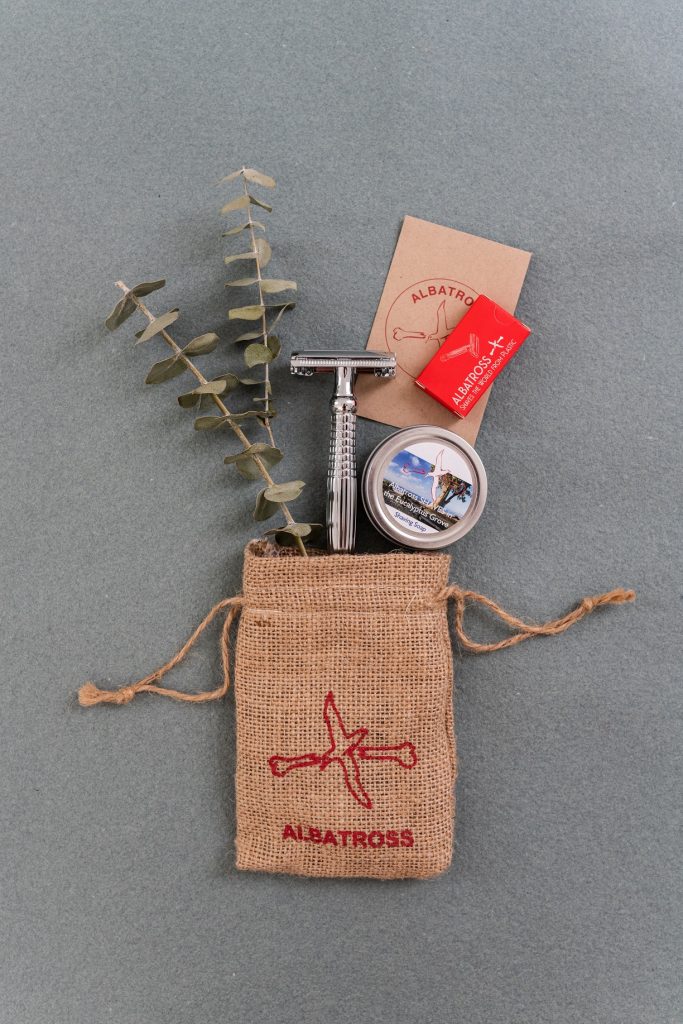
“The cool thing about our team is that everybody just gets genuinely happy when people switch from plastic razors to zero waste ones — whether we sell them or a competitor does. “
-Andrew Lacenere, Founder and CEO of Albatross Designs.
West Coast Shaving
With too many products to list, West Coast Shaving will certainly have eco-friendly shaving products to fit your needs and budget. They do not seem especially focused on the environment, so its worth a check to see if their shaving creams and soaps are truly natural and organic. Nevertheless, their blog could be a useful place to learn about shaving products and techniques that you are unfamiliar with.
Electric Razors
This article by Brian Palmer at Slate brilliantly breaks down the environmental impacts of electric and disposable razors – factoring everything from the manufacturing process to the energy required to heat water while shaving. Spoiler alert: despite having greater up-front manufacturing costs, electric razors quickly become eco-friendlier than disposables because “dry shaving” uses much less water (and energy to heat that water) and they take up less landfill space due to their long lifespan.
Palmer also make an interesting point about shaving in the shower, which I will let him restate here:
“Shaving for 10 minutes with a typical 2.5 gallons-per-minute shower head, you’d waste more than 24 gallons of hot water, 4.1 kilowatt-hours of electricity, and 5.3 pounds of carbon dioxide in your warm, misty tub. It would take less than three days of shaving (in the shower) to account for the energy you’d use by shaving in the sink for an entire year.“
While electric razors beat out plastic disposables in the long haul (remember how I said disposable are rock bottom), they still have a larger environmental impact than safety razors. With that said, here are 10 electric razor options for women.
Razors made from recycled materials
While new recycled plastic-based products seem to be popping up daily, the shaving industry appears to be lagging behind. In a slightly better world, the big shaving brands would take it upon themselves to use recycled materials, but until that happens, I found one shaving set-up using recycled plastic.
Preserve
A Certified B Corp, Preserve has been creating household products out of recycled plastic since 1996 – from toiletries to kitchenware to tote bags. Preserve’s Shave 5 Razor System features a razor handle made from recycled plastic that can be re-recycled through its Gimme 5 send-back program. This program has recycled 80 million yogurt cups since 2007 and has drop-off bins at many Whole Foods locations.
However, Preserve admittedly hasn’t yet figured out how to recycle their 5-blade heads… which don’t appear to be made from recycled materials. A few reviews suggest the replacement heads can be hard to replace, but at least the lubricant strip is organic and vegan. Nevertheless, this razor system is heading in the right direction and perhaps a stepping stone for those not ready to give up multi-blade heads and lubricant strips cold turkey.
More options to consider
- Straight Razor – The eco-friendliest shaving option for those willing to master it. A properly cared for blade and handle can last a lifetime, eliminating the need to throw away or recycle.
- Plant-based shaving creams – Take the next step in greening up your shaving routine by using natural shaving creams and soaps. In addition to the ones listed above, consider products from Bikini Soft and Pacific Shaving Co. or make your own with these recipes.
- Recycling Options – Gillette recently teamed up with Terracycle to offer a mail-in and drop-off recycling program. Heads up, the drop-off sites are often peoples’ homes. Keep an eye out for other companies to follow suit.
- Shave less (or not at all) – I’m not going to elaborate on that. Just shave less if you feel comfortable doing so.
Photos courtesy of Albatross Designs.

